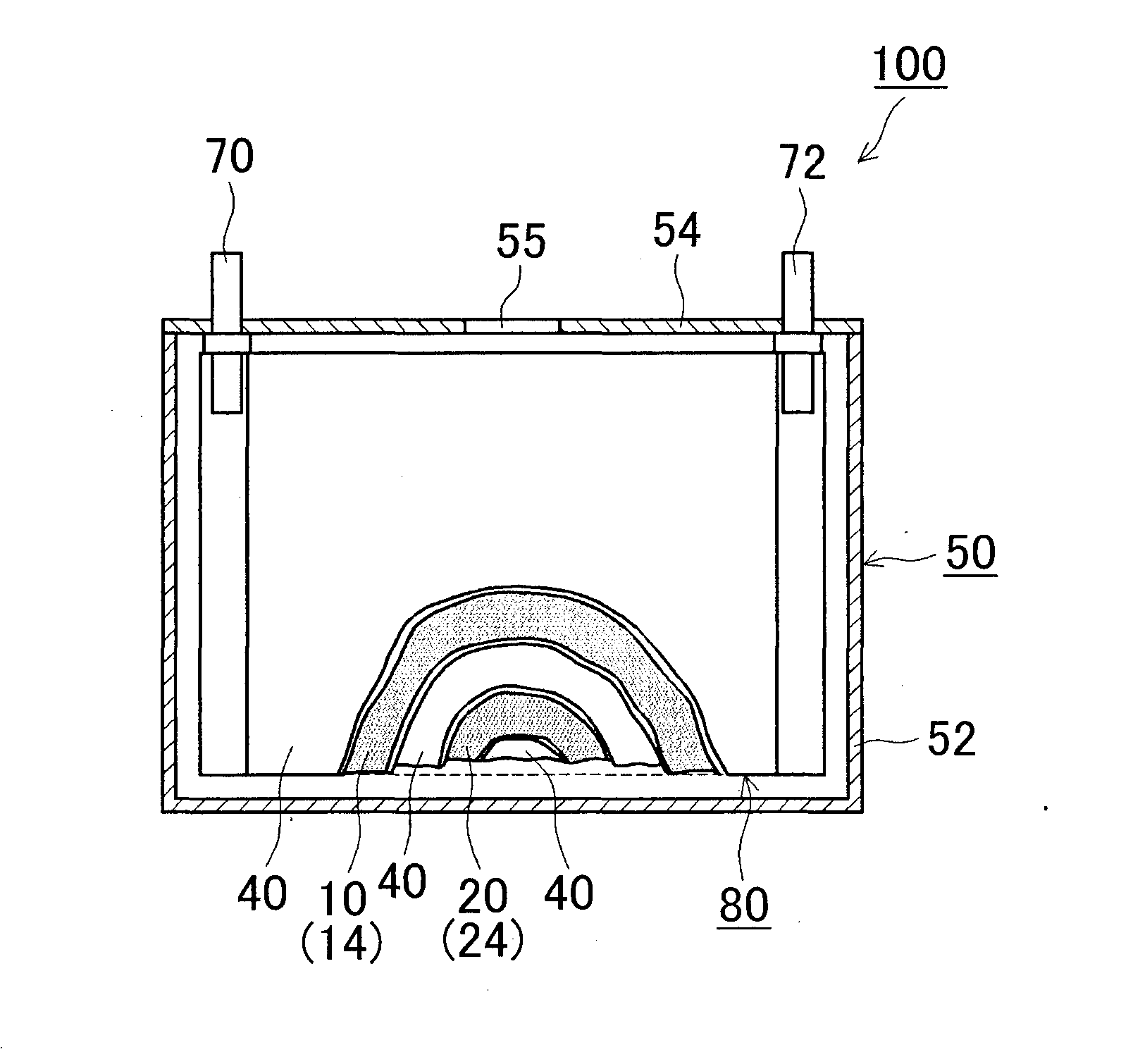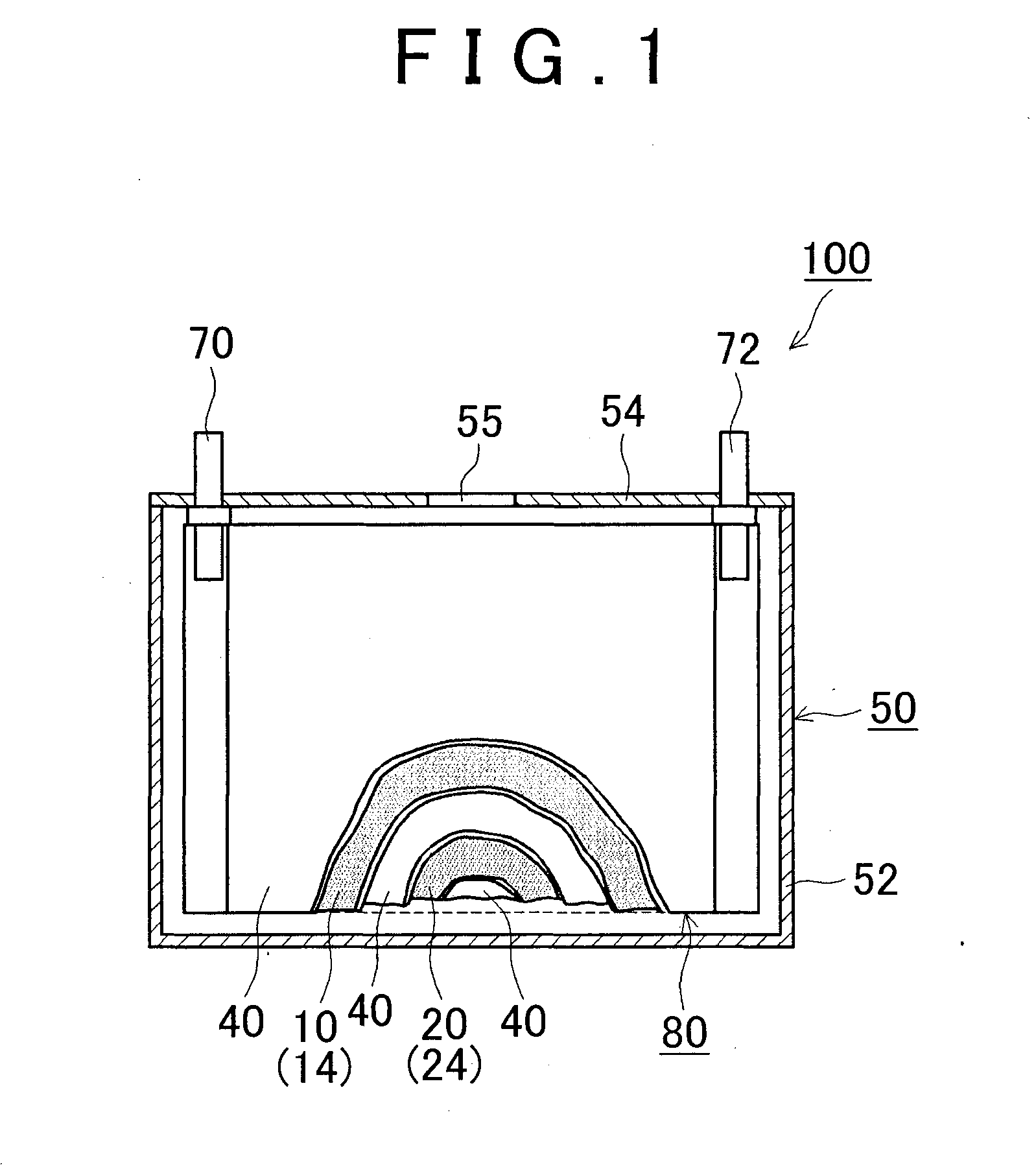Non-aqueous electrolyte secondary battery
a secondary battery, non-aqueous electrolyte technology, applied in batteries, cell components, electrochemical generators, etc., can solve the problems of energy density declination, and achieve the effect of high energy density, reduced invention effect, and high durability
- Summary
- Abstract
- Description
- Claims
- Application Information
AI Technical Summary
Benefits of technology
Problems solved by technology
Method used
Image
Examples
Embodiment Construction
[0024]A preferred embodiment of the present invention is illustrated as follows. Furthermore, the items indispensable for implementing the present invention (e.g. common manufacturing process of the battery which fails to endow characteristics for the invention) other than those (e.g. structure, of the positive electrode) mentioned in the specification can be grasped as the designation items for those skilled in the art based on the previous technique of the present field. The present invention can be implemented based on the disclosure of the present specification and the technical common knowledge in the art.
[0025]The non-aqueous electrolyte secondary battery disclosed herein comprises a positive electrode, a negative electrode and a non-aqueous electrolyte. The structural elements are illustrated sequentially as follows.
(Positive Electrode)
[0026]The positive electrode of the non-aqueous electrolyte secondary battery disclosed herein includes a positive electrode active material l...
PUM
| Property | Measurement | Unit |
|---|---|---|
| particle diameter | aaaaa | aaaaa |
| particle diameter | aaaaa | aaaaa |
| oxidation-reduction potential | aaaaa | aaaaa |
Abstract
Description
Claims
Application Information
 Login to View More
Login to View More - R&D
- Intellectual Property
- Life Sciences
- Materials
- Tech Scout
- Unparalleled Data Quality
- Higher Quality Content
- 60% Fewer Hallucinations
Browse by: Latest US Patents, China's latest patents, Technical Efficacy Thesaurus, Application Domain, Technology Topic, Popular Technical Reports.
© 2025 PatSnap. All rights reserved.Legal|Privacy policy|Modern Slavery Act Transparency Statement|Sitemap|About US| Contact US: help@patsnap.com



